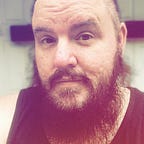Book Review: Boy Erased: A Memoir of Identity, Faith, and Family — Garrad Conley
As a gay man who has survived conversion therapy, I was very hesitant to read Garrard Conley’s memoir, Boy Erased. I feared, even at fifty years old, that it would serve as a trigger to the trauma I endured in my twenties. But I was insanely curious about his story. I hoped that I could use his book as a companion, of sorts, to walk through my trauma and face it head-on. I won’t use this review to hijack Conley’s story and use it as a sounding board of my time in conversion therapy. I’ve already written my book. I want to talk about Garrard Conley.
Conley’s story is somewhat different than mine. I had a counseling session with Exodus International but never participated with Love In Action. Conley’s raw and reflective journey is honest and compelling. There is an interesting juxtaposition between his belief that he could change and his struggle to convert to a straight man, while equally taking notice of a friend’s crescent-shaped calf or another man’s leg in his running shorts and the dark mystery that was just inside. He flat out nailed how so many gay men face this sort of thing when going through religious therapy to pray the gay away, simultaneously trying to shun anything that could tempt you to be perverse and impure in thoughts while quietly noting a man’s butt in his jeans or a muscular forearm. Simple things that people find attractive are given the badge of sin or evil by those who are so vexed by human diversity.
Conley’s re-telling of the almost-two weeks he attended Love In Action’s camp feels like an eternity. Perhaps his telling of his time there, peppered with intimate flashbacks and his weekdays at college is meant to convey as low burn. His time at Love In Action, undoubtedly, felt longer in person. His mother’s love for him is misguided at first. His yearning just to be accepted by his father, as he was before Conley revealed he was gay, is palpable. The final day at Love In Action reveals itself as dramatic and intense. The tension, the build-up, the frustration, and the ultimate disregard for Love In Action’s push to dig for deeper hatred and anger rather than love is real. Their need for students to find hatred of their own family members to justify why they are gay was always an odd concept to me and certainly shows up that way in Conley’s book. The ‘love’ in Love In Action is sorely missing. It always was absent. Their program was drawn not in love and forgiveness but paranoia, vitriol, and a vendetta to erase homosexuals from the United States under the guise of Godly intervention and personal triumph. The struggle to become free of the bondage that is homosexuality is heralded as worthy of honor and accomplishment. Its damaging effects on young men and women, propagated through their theocratic concepts, would prove to harm more people than any good it hoped to achieve.
There isn’t a dull page in this book. It doesn’t start with “I was born in this date, then toddled for this many years, then I loved puppies.” It begins with Conley’s first day at Love In Action. Flashback moments give detailed perspective to the relationship with his high school girlfriend, the pressure to stay with her, the pressure to have sex with her, his eating disorder, and overall building of self-hatred as he battled his faith and his heart. His biggest battle would be to reconcile both of those things. To those, like Conley, who navigate conversion therapy, any turn is a wrong turn. Everything from legs crossed a certain way, hand gestures, looking at someone too long, or socks are questioned as possible homosexual inclinations. It feels like something from Orwell’s Nineteen Eighty-Four or Atwood’s The Handmaid’s Tale; they both show societies whose governments constantly attempt to brainwash the masses. Four is five, up is down, war is peace. It stifles all self-awareness and attempts to rebuild a façade of dogmatic regularity. Love In Action prefers a non-thinking heterosexual rather than a thinking homosexual. This conduit serves those who call themselves teachers or preachers exponentially more than those who seek teaching (albeit based on falsehoods).
Conley’s story is highly regular in scope to those who have suffered conversion therapy tactics. The process is still legal in thirty-six states. The damage done to a person is long term and broad sweeping. The weight while writing Boy Erased inevitably weighed on Conley’s shoulders. His father feared losing his job and speaking gigs if Conley published the books. Like any good father, he realized the one thing he wanted more than a straight son was a happy one. I’ve not heard much from his father in interviews related to the movie, but I do hope that the Conleys are content, comfortable, and accepting of their son.
And themselves.
Garrard Conley, thank you for writing this book. Your words resonate with those like you. Even though the stories are familiar, and some details differ, hearing them always serves as a comfort to the speaker and the listener.
Ernest Sewell was born & raised in Oklahoma. After living across the U.S. in places like Philadelphia, Los Angeles, and Minneapolis, he’s settled in upstate New York for the past twenty years. He’s authored and published two books and is currently working on a new horror novel due in 2020. He shares his home with a friend, three cats, and his vinyl collection, all of whom have the same level of love from him. When he’s not causing an uproar on Prince forums or social media, he enjoys reads (a lot), trying new recipes, and prank calling people.
“Don’t take yourself too seriously. No one else does.”
